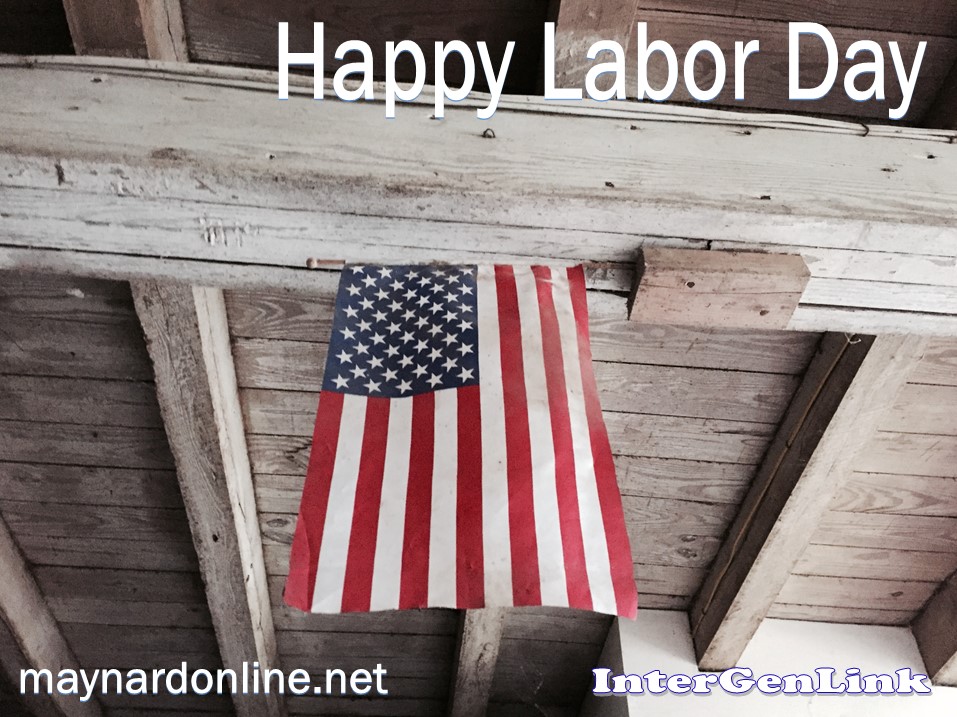As a PM, I find these reminders very helpful in the day to day work.

As a PM, I find these reminders very helpful in the day to day work.
Interesting review of how Cyber Security has come into being and how it has evolved.
From phone phreaks to next generation cyberattacks
Source: The History Of Cybercrime And Cybersecurity, 1940-2020
This excellent piece by Wayne Turmel contains great advice for remote project teams.
Remote project team coordinators often struggle to incorporate contractors. How do you encourage buy-in to short-term projects?
Source: Create a Chain of Connection for Project Team Contractors | Remote Leadership Institute
I enjoyed this piece because it brings some of the process and project thinking I like into pieces that one can digest in life. It helps bring some of the principles of the Agile Manifesto to every day life.
Tinkering with different problem-solving methods and perspectives is a key ingredient in this agility development practice.
Source: How to incorporate the Agile Manifesto into your workday

All members should adopt a similar mindset to level the playing field and keep everyone engaged to handle high complexity.
Source: The Agile Mindset And Why It’s Important – The Agile Times
These three steps may sound straightforward, but in practice they can be trickier than you think. Here are some tips for how to get going with P2P.
Source: Agile strategy: How to go from projects to products in 3 steps | TechBeacon

David Nour on how to visually engage a capable yet distracted and quietly disillusioned remote team with agile alignment.


Here’s wishing all our friends a Happy Thanksgiving this year! May your time be filled with peace and joy as you enjoy those you love.


Photo by Yury Kim on Pexels.com
Celebrating American Workers and their Achievements!
One size does not always fit all. I learned long ago that “one size fits all” baseball caps – don’t – namely – don’t fit me. I think other people look great in them but when I squeeze my head into one with great pain and agony, I only get a deep ring indent around my

Photo by Eric Hammett on Pexels.com
skull and a nice “marshmallow with a rubber band on one end” type of look. It’s a fat heads need not apply kind of thing.
In life, education, processing of information, etc., categorizing and making assumptions is part of the fabric of human functioning. The greatest of human accomplishments depend on this basic process. However, it doesn’t always work in relationships with other people. One size does not fit all.
I’m a firm believer that teams are stronger when creativity and trust are fostered. While it is true that team members should demonstrate trust and trustworthiness, it should be “doable” on the team. This becomes NOT doable when we measure motives instead of actions and categorize and assume without truly understanding a person’s motives. Don’t expect a one size fits all mentality to work.
For example, one of the areas where I see this issue arise is in the workplace because it is now occupied by four identified generations. While these identifications are only general references, they do help highlight differences in the way of thinking of different age groups. We are all impacted by world events and influences in our upbringing and life experience. How work is done and how it is viewed has evolved tremendously the over the last 60 or 70 years. It’s an area ripe for categorizing and assumptions about people from one era or another, which means it’s a conflict generator. How things once were or perhaps “should be” easily can become one size fits all thinking that will lead to false assumptions and wrong categorization.

Photo by Pixabay on Pexels.com
We’ve been focusing on this issue at cfd Investments, Inc. where I serve as Project Manager. We’ve developed some activities to help us discuss this issue and we have sought out resources to educate our company on this topic. We want to avoid making assumptions about “young” or “old” that hinder the creation of trust, creativity, and productivity. I’ve seen our efforts to move away from a one size fits all mentality make a difference.
Keep assumptions and categories where they belong, but use great care when it comes to people. Even though there are challenges, I don’t believe it’s ever a mistake to be vested in your team or your teammate’s success. When it comes to people, avoiding a one size fits all mentality is a win all the way around.
I heard from a friend today, asking my opinion about an effort he is a part of. I realize he asked me to honor me as much as anything. He knows more than I do about the topic – by far.
His message reminded me of something I have believed all along, but haven’t practiced it as I should. You should recognize and appreciate those who help you along the way in your life journey. For me, that’s a huge list of fantastic people.
When I think of my career at this point, a special group of people in Indianapolis are guilty of helping me tremendously. This is the leadership group of Project Management Institute Central Indiana Chapter most times referred to as PMICIC.
In addition to the networking and encouragement from the overall chapter, I have been blessed in the past to work with Rep Ram, Mike Fisher, and Aisha Cargile (plus others) elbow to elbow on the leadership team as a vice-president. That has been over a year ago as I write this, but these quite servants to others in project management are professional difference makers. They with their colleagues lead an army of volunteers providing incredible support to the profession of project management in Indiana.
They help people figure out their careers, especially if it remotely touches project management – and a lot of career streams certainly do! I get my ears full occasionally about less than accomplished pm’s. I like this group because they are dedicated to making the profession better by serving as Indiana’s largest chapter of Project Management Institute.
Whether your focus is Waterfall or Agile, check out the chapter’s offerings. Especially, mark your calendar for May 10-11. PMICIC is sponsoring Project-Con, and it’s a must attend. Check out projectconevent.com for all the latest. I’m looking forward to it!
I follow Jennifer Bridges because she has a great way of simplifying complicated issues while making them doable. I am also a Project Manager that appreciates both Waterfall and Agile Project Management. To be Agile almost seems like it doesn’t go with forming Habits. I recognize that I’m talking about two different things when it comes to habits and Agile thinking, but I see some useful parallels. I think forming habits for success can strengthen one’s ability to be Agile. Scrum, for example, uses a number of “habits” or practices that help the team become Agile in dealing with complex and unpredictable projects. Take a look at Jennifer’s video and consider how forming strong habits can help you become successful, even if your focus is being Agile.
Everything you do influences your performance. Jennifer Bridges, PMP, shows you which work habits propel you to success.
I found this very helpful post by Erika Flora that is a concise but thoughtful treatment of what you should be thinking when you use the words Agile and Scrum. At least for me, the path isn’t as clear in the reading I have done, until I found this piece. Take a look, you’ll be glad you did!
A lot of people use the words Agile and Scrum interchangeably – as though they mean the same thing. They don’t. So what’s the difference between Agile and Scrum? I dig into the differences here, plus a bonus overview of Scrum basics.
Jennifer Bridges of projectmanager.com produces helpful brief videos describing various concepts. This particular video is a great high level overview of setting up self directed teams, which is an art as much as it is a science. Take a look!
With more & more self-directed teams working on projects, you may have to setup or partake in one. So, it’s important to understand self-directed teams.
Source: How to Setup Self-Directed Teams
Distributed teams are an integral part of Project Management and work with Vendors. I appreciate the need to do this part of the job well, even though my natural strengths are to work with people in person. This is a great start to the journey of thinking through how to manage teams that are not located in the same zip code.
Team Tech Assessment for Project Managers | Remote Leadership Institute
How well are your project managers adjusting to the new world of virtual work, telework and remote teams? Two-thirds of capital expenditures are spent on projects and 90% of those projects involve team members who are not co-located. Without careful planning, remote leaders find themselves in an uncomfortable environment where they aren’t forming good relationships with […]
Source: Team Tech Assessment for Project Managers | Remote Leadership Institute
Simply put, life goes better when humans we encounter are seen as people… again, seen as PEOPLE. This is underscored by current events, especially lately. In my experience thus far as a Project Manager, seeing people as people is key to successfully managing projects. I’m excited about the next speaker at PMI Central Indiana Chapter (PMICIC) because the topic is “People Matter: Know Your Talent”.
Being a member of Project Management Institute (PMI) and my journey to Project Management Professional certification has given me tools to work with that I frankly didn’t previously know existed. The PMBOK provides a detailed road map to help navigate any project. It doesn’t mean you take every route possible to get to your destination, but it’s really nice to have lots of options. Repeatedly throughout my studies and my interactions with PMI, it has been emphasized that Project Management is mostly about communication – and that’s means it’s about people. One can have the most technically correct and functional plan – but without people understanding it and engaging the plan… it’s incomplete.
I love being a member of a local chapter of PMI (PMICIC). When I think of my chapter, a word picture comes to my mind. PMI is a phenomenally recognized global organization and the PMBOK is a very technical road map, however PMICIC puts “skin” on all that for me. PMI majors in contemporary uses for tried and tested tools for any PM challenge. However, PMICIC adds the “people” part for me. I always learn a lot – and I can network with a host of local professionals – who’ve done this stuff in a context I can grasp and apply practically. And that’s real value, in my view.
Needless to say, I’m very happy that Ellen Decker will be speaking on July 20 for PMICIC’s monthly dinner. Her topic is “People Matter: Know Your Talent” and I’m looking forward to a powerful presentation that will help put “skin” on Project tools. Visit pmicic.org to learn about the dinner and much more about this powerful organization. If you are thinking about PMI, just do it. It’s worth it. And plug into a local chapter if at all possible. I really think you will be glad you did!